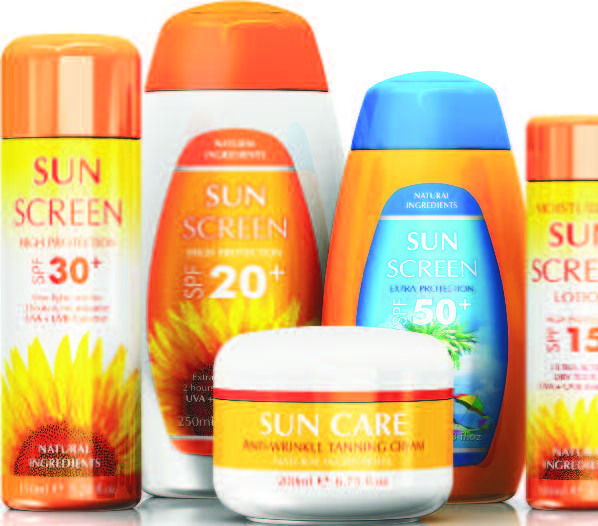Surf’s Up! What’s your Beach IQ?
Countless thousands of Garden Staters will head to the Jersey Shore this summer to enjoy a day at the beach. For an unlucky few, that will translate into a night in the ER. Or worse. Truth be told, luck has very little to do with beach-related emergencies. Playing it smart while you play in the water not only keeps you and your family safe, it can help prevent long-term medical issues, too.
How much sun is too much sun?
Emergency Department physicians deal with the pain experienced by patients who have gotten too much sun exposure. I’ve heard some dermatologists say, “A good tan could be the first sign of skin cancer.” That is an extreme statement, but the sun’s ultraviolet rays can damage unprotected skin in as little as 15 minutes. Wear sunscreen with UVA and UVB protection with a Sun Protective Factor (SPF) of 15 or higher, and reapply it often.
How often is often?
Every 2 to 4 hours, especially after swimming or sweating. That’s also true far from the beach, particularly at higher elevations.
What other precautions should I take?
Seek shade, especially during the midday hours [10 a.m. to 3 p.m.) when the sun is strongest. Wear a hat to protect your head and clothing to protect exposed skin. Also, wear sunglasses with UV ray protection to protect your eyes.
How about kids?
Keep babies less than 6 months of age out of the sun, and do not put sunblock on them. The chemicals in sunblock could potentially harm babies. Otherwise, the same basic sunscreen and sun-exposure rules for adults apply to children. It’s really important, by the way, to teach them the importance of protecting their skin, because you won’t always be supervising them when they are outdoors.
How dangerous is the water along the Atlantic Coast?
I worked in Florida for the first 6 years of my career and had the unfortunate experience of witnessing the unthinkable, so trust me when I say never, ever turn your back on the ocean, or underestimate its power—even on the most placid beach days. Drowning is the fifth-leading cause of unintentional injury death in the United States. It is the leading cause of death among boys 5 to 14 years of age worldwide and the second-leading cause of injury-related death among children 1 to 4 years of age in the United States.
What are some precautions I can take when my kids are in the water?
Supervise young children at all times, even when they are only near the water. And by water I am including creeks, canals, rivers, lakes, hot tubs, pools and bathtubs. It can take only a matter of seconds for a child to accidentally drown. At the beach, make sure each child is swimming with a “buddy”—not another child, but an adult who is designated to enter the water with them. Obviously, you want to teach children to swim and make sure they understand basic water safety. For example, they should know that if they are swept up by a rip current to swim parallel to the shore instead of fighting against it. Adults should know this, too. Many don’t.
In a potential drowning emergency, what do I do?
Identify your surroundings and call for help—make sure a lifeguard or someone with a phone calls 911 to initiate an emergency response medical team. If an unconscious victim is in shallow water (where you can stand) administer five short rescue breaths while still in the water and then proceed to land. Once on land, the victim should be placed on his or her back, airway open. Check to see if the victim is breathing. If not, give another 5 rescue breaths and check for a pulse. If there is no pulse, begin CPR: 30 chest compressions followed by 2 rescue breaths, then repeat the cycle. If vomiting occurs, turn victim onto his side to clear the airway.
Wait, I have to learn CPR?
Yes. Not only for your children’s sake, but for the safety of everyone at the beach. You don’t have to become an expert in ocean rescues—remember, you need to be a strong swimmer before attempting to rescue a swimmer in distress or you could become a victim yourself—but you should be able to administer CPR to a near drowning victim.
Isn’t that the lifeguard’s job?
Yes, again. Which is why you want to swim near areas that have lifeguards on duty whenever possible. But there could come a time when you are the person standing between life and death, and it might be a friend or family member in need of attention.
What are some common water safety mistakes boaters make?
Alcohol consumption is a big one. Consuming alcohol impairs cognitive function which can lead to poor judgment. Another is not having a sufficient number of Coast Guard approved life jackets for the passengers aboard. Make sure there are age-appropriate life jackets for children, and do not accept foam toys or air-filled toys as substitutes for life jackets. A classic mistake boaters make is not checking the weather conditions before heading to the water.
RED MENACE
When it comes to protecting the skin from the sun, some people need to be more cautious than others. You are likely to be at highest risk for melanoma—the third most common skin cancer—if you have…
• a history of multiple sunburns
• lighter skin color*
• red or blond color hair
• multiple moles on your skin
• a suppressed immune system
• a personal history of skin cancer
• a family history of skin cancer
* The risk of melanoma is 10 percent greater for light-skinned people than for dark-skinned people, but everyone should protect their skin— and schedule routine skin exams by a physician or dermatologist.

Did You Know?
Your eyes are covered with ‘skin’ called the cornea. It too, can burn and suffer irreparable sun damage. A good pair of sunglasses in summer should be as important as carrying your cell phone.
Editor’s Note: John D’Angelo, DO, is the Chairman of Emergency Medicine at Trinitas Regional Medical Center. He has been instrumental in introducing key emergency medical protocols at Trinitas, including the life-saving Code STemi, which significantly reduces the amount of time it takes for cardiac patients to move from the emergency setting to the cardiac catheterization lab for treatment.





